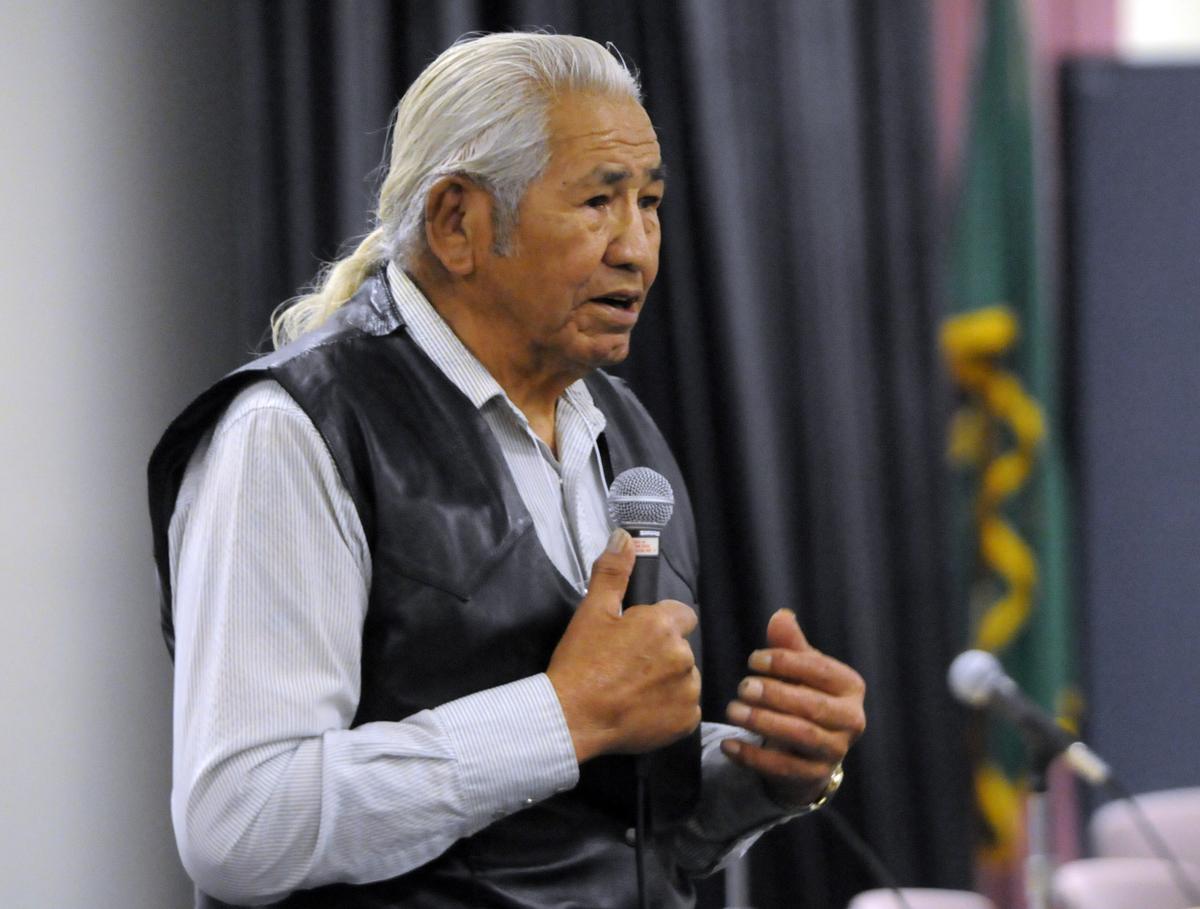
The Salish language family is found on the Northwest Coast and in the Columbia Plateau. Salish is generally felt to have great antiquity in the Northwest Coast. Salish-speakers were the earliest settlers in the Fraser River area of British Columbia. Linguists estimate that this language family may be 6,000 years old, although some feel it may be as young as 3,000 years old.
Salish is the largest language family in the Pacific Northwest. In his book The Salish Language Family: Reconstructing Syntax, Paul Kroeber writes:
“In geographical and cultural terms, too, Salish has a considerable spread: it is well represented both in the central Northwest Coast culture area and across the Coast Range and Cascades in the Plateau culture area.”
In their chapter on language in the Handbook of North American Indians, Laurence Thompson and Dale Kincade report:
“Salish languages are highly polysynthetic, employing numerous suffix and reduplication patterns; prefixes and infixes are less numerous.”
Of the Salish languages, Pentlatch, Tillamook, Twana, and Nooksack are no longer spoken. Pentlatch has been extinct for some time and the last known native speaker was alive in the 1930s. Pentlatch was replaced by the neighboring Comox, Halkomelem, and Nootka. Most of the other Salish languages are listed as either endangered or highly endangered.
Some of the divisions of this language family are described below.
Northwest Coast
The Northwest Coast culture area includes the area along the Pacific Coast north of California and between the Cascade Mountains and the Pacific Ocean. This is the home to many Indian nations who traditionally based their economy on the use of sea coast and river ecological resources. The Northwest Coast Salish languages include a number of sub-groups:
Halkomelem Group: Chilliwack, Cowichan, Katzie, Kwantlen, Musqueam, Nanaimo, and Tait. By 2002 there were no fluent speakers of the Halkomelem Musqueam. In his book When Languages Die: The Extinction of the World’s Languages and the Erosion of Human Knowledge, David Harrison writes:
“Musqueam has a rich vocabulary for describing local flora and fauna, in particular plants or animals that provided nutrients or medicine.”
The Musqueam classification of fish is more genetically accurate than the English folk classification. What the English folk classification calls “steelhead trout” and “cutthroat trout” are grouped with salmon in Musqueam, a classification verified by genetic studies.
Cowlitz Group: Cowlitz
Lower Chehalis Group: Chehalis, Humptulips, and Wynoochee.
Lushootseed Group (also called Puget Sound Group): Duwamish, Kikiallus, Muckleshoot, Nisqually, Nuwhaha, Puyallup, Sahehwamish, Sauk-Suiattle, Skagit, Skykomish, Snohomish, Squaxin, Steilacoom, Stillaguamish, Suquamish, and. Swinomish.
Nootsack Group: Nooksack, which was spoken by a small group in aboriginal times. Some linguists group this with Central Coast Salish.
Quinault Group: Copalis, Oyhut, Queets, and Quinault.
Straits Group: Klallam, Lummi, Saanich, Samish, Semiahmoos, Songhees, and Sooke. Some linguists group these languages with the Central Coast Salish group.
Twana Group: Quilcene, Skokomish, and Twana.
Upper Chehalis Group: Satsop
Tillamook Group: Tillamook, Nehalem, Nestucca, Siletz, and Salmon River. The Tillamook group is separated from other Salishan groups by Chinookan and Athabaskan speakers.
Northern Coast Salish Group: Comox, Pentlatch, Sechelt, Squamish, and Halkomelem. Comox is divided into Island Comox and Mainland Comox. In the 1980s, there was only one Island Comox speaker. In their entry on Northern Coast Salish in the Handbook of North American Indians, Dorothy Kennedy and Randall Bouchard report:
“In the 1980s, Mainland Comox continued being spoken fluently by about one-third of the population and was the most viable of all Salishan languages.”
Bella Coola: Bella Coola is the most divergent of the Northwest Coast Salish languages. Bella Coola had two or three main dialects. In their entry on the Bella Coola in the Handbook of North American Indians, Dorothy Kennedy and Randall Bouchard write:
“Bella Coola is surrounded on the south, west, and north by Wakashan languages, and on the east by Athapaskan languages.”
Some linguists divide the Northwest Coast Salishan languages into only four groups: Central Salish, Olympic Salish, Tillamook, and Bella Coola.
Plateau
The Plateau Culture area is the area between the Cascade Mountains on the west and the Rockies on the east; it is bounded by the Fraser River in the north and the Blue Mountains in the south. The Salishan languages in this area spread inland from the Pacific Coast. Nearly half of the languages in the Plateau culture area belong to the Salish language family. The Plateau Salish languages include a number of sub-groups:
Northern Interior Salish: Lillooet, Thompson, and Shuswap. There are two distinct dialects of Lillooet: Upper Lillooet (spoken along the Fraser River) and Lower Lillooet (spoken to the west along the Lillooet River). There are also two distinct dialects of Shuswap.
Coeur d’Alene Group: Coeur d’Alene. In their chapter on Plateau languages in the Handbook of North American Indians, Dale Kinkade, William Elmendorf, Bruce Rigsby, and Haruo Aoki report:
“Coeur d’Alene is a rather homogenous language originally spoken in a broad area around Coeur d’Alene Lake in southern Idaho.”
Columbian Group: Chelan, Columbia, Entiat, Methow, and Wenatchee. The languages in this group were originally spoken along the middle portion of the Columbia River in Washington.
Kalispel Group: Kalispel, Cheweleh, Spokan, Pend d’Oreille, and Flathead.
Okanagan Group: Colville, Lakes, Nespelm, Okanagan, Sanpoil, and Sinkaietk. In their chapter on Plateau languages in the Handbook of North American Indians, Dale Kinkade, William Elmendorf, Bruce Rigsby, and Haruo Aoki report:
“In many respects Okanagan appears more conservative than the other Interior Salishan languages: or else its central location has resulted in its sharing features with languages both to the northwest and the southeast.”
Thompson Group: Utamqt
Two of the early works on Salish linguistics were done by Jesuit missionaries working in the Plateau area. Gregorio Mengarini published a primer of Salish grammar in 1861 and in the 1870s J. Giorda published Dictionary of Kalispel or Flat Head. In his book Visible Bones: Journeys Across Time in the Columbia River Country, Jack Nisbet reports:
“Both of these works attempted to shoehorn the tribal language into Latin forms, a difficult task because it has no verb ‘to be’ or any concept of plural nouns. Modern linguists who try to interpret the Jesuit notation can only guess at many points of pronunciation.”
Norwegian linguist Hans Vogt visited the Kalispel Reservation in 1937 and concluded that Flathead, Pend d’Oreille, Kalispel, Chewelah, and Spokane are all closely related. Jack Nisbet reports:
“Linguists refer to these dialects as members of the Interior Salish language group, spoken by people along a curving stretch of territory known as the Salish Arc.”
Vogt also found that few young people on the Kalispel Reservation were fluent in the language.
The Salish-speaking tribes of Idaho and Montana have had a long friendship and association with the Sahaptian-speaking Nez Perce. Linguist Haruo Aoki, in an article in Idaho Yesterdays, reports:
“The relationship between Salish and Nez Perce seems not to be a genetic one. Any words found in the two languages with similarity in form and meaning are likely to be either because of accident or by borrowing and not because of recent common ancestry.”
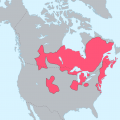
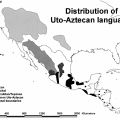
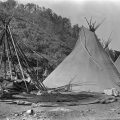
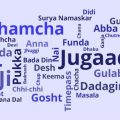
Leave a Reply